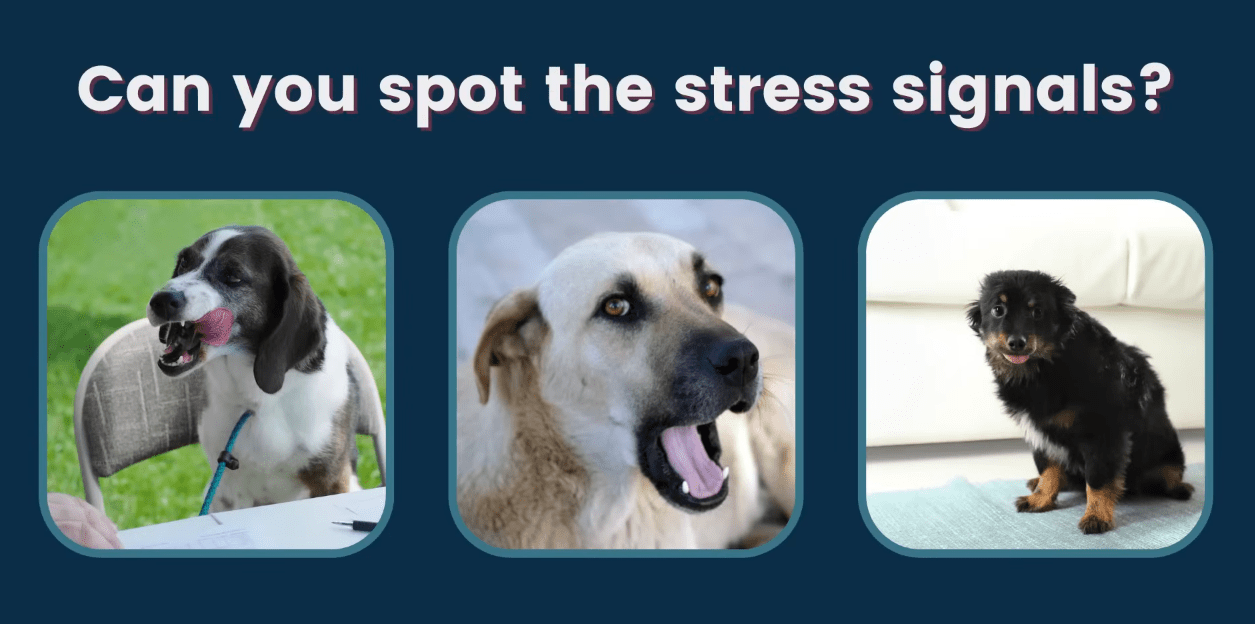Our furry friends, like us, can experience stress in various situations. Whether it’s loud noises, changes in routine, or unfamiliar environments, dogs can exhibit signs of stress that may sometimes go unnoticed by their human companions. As responsible pet owners, it’s essential to recognize these signals and learn how to effectively handle and alleviate stress in our canine companions. We’ll explore common signs of stress in dogs and provide tips on how to help them feel more comfortable and secure in their environment.


Recognizing Signs of Stress:
Pay close attention to your dog’s body language, as it can often be a clear indicator of their emotional state. Signs of stress may include trembling, panting, tucked tail, lowered body posture, and yawning.
Excessive barking, whining, or growling can be signs of distress in dogs. While occasional vocalization is normal, persistent and intense vocalization may indicate underlying stress or anxiety.
If your dog is trying to avoid certain situations or stimuli, such as hiding, cowering, or attempting to escape, it’s likely they’re feeling stressed or overwhelmed.
A sudden decrease or increase in appetite can be a sign of stress in dogs. Pay attention to any changes in your dog’s eating habits, as they may indicate underlying emotional distress.
Dogs may exhibit destructive behavior, such as chewing, digging, or scratching, when they’re feeling stressed or anxious. This behavior can be a coping mechanism for dealing with overwhelming emotions.


Handling a Stressed Dog:
Create a Safe Space: Provide your dog with a quiet and comfortable area where they can retreat to when they’re feeling stressed. This could be a cozy corner with their bed, blankets, and favorite toys, away from noisy or chaotic environments.
Provide your dog with interactive toys, puzzle feeders, or chew toys to keep them mentally stimulated and engaged. Engaging in enjoyable activities can help distract your dog from stressful situations and redirect their focus.
Incorporate calming techniques, such as gentle massage, aromatherapy, or soothing music, to help relax your dog and alleviate stress. These techniques can help create a calming environment and promote relaxation.

Understanding and recognizing signs of stress in your dog is the first step towards providing them with the care and support they need to thrive.
